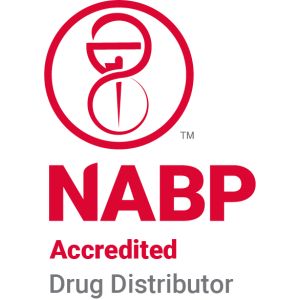Why Making It Vs. Buying It Doesn’t Equal Free
Managers and leaders in every industry struggle with a common decision about capabilities: should I make them, or should I buy them? From software to services, companies have to decide whether or not doing something in-house is financially or competitively advantageous.
Making the best decision for your company really comes down to a clear understanding of your true internal costs. And that clarity on your true internal cost is critical to ensuring your financial viability, sustaining your growth, and creating greater operational efficiencies, especially in an industry as competitive as the orthopedic medical device field.
But calculating your true internal cost to make the best decision isn’t straightforward. Simply having the space or capacity internally doesn’t mean you shouldn’t outsource. And it’s easy to fall into some common traps when it comes to decisions on capabilities such as cleaning, validated packaging, field returns, or loaner kit management.
Myth #1: If I do it in-house, it’s free.
Be wary of this idea. Nothing, even done internally, is free. Your business incurs operational and indirect costs with everything it produces, every day you’re in business.
To understand your internal costs, you need to determine your full burden labor rate. Since there is no way to pull these costs out of your system and directly assign them on a per-unit basis, it’s a calculation you’ll have to back into. Your full burden labor rate will include the cost of not only the temporary and permanent staff you allocate to any effort but also the associated or proportional costs incurred by IT personnel, quality and operations staff, and any involvement from leadership or maintenance.
You can see that what can, at first glance, seem “free” actually comes with a high cost when you factor in your full burden labor rate.
Myth #2: If I have space or capacity internally, the decision is obvious—I should do it in-house.
Just because you have space or capacity doesn’t mean that you can save on costs by keeping something in-house.
Many OEMs heed the siren song of this idea. For example, an OEM might think that if there is space in its clean room and a team in place, doing cleaning and sterilization in-house is always going to be financially advantageous. The OEM will bump up capacity by bringing in a few temporary staff.
As you know from myth #1, though, in-house isn’t always the less expensive option. It’s important to always consider the true overhead costs, including permanent staff salaries and hourly work (including overtime), as well as any other indirect or fixed costs.
In addition, in-house resources like time, staff, and budget are finite. The surest way to grow is through success in patient outcomes, the development of innovative products, and the expansion of your market share, aided by operational optimization that generates higher profits and more working capital. If you’re trying to do everything in-house, it’s impossible to focus on—and prioritize—your core competencies of product design and marketing. That’s when outsourcing can prove to be the smarter long-term decision.
Myth #3: All outsourcing decisions are the same.
Broadly speaking, there are two decision paths when it comes to outsourcing. The first is outsourcing to a truly expert partner. The second is having a vendor that makes a product also bid on packaging it. In the latter, what’s seductive to an OEM is the idea that a product will be complete when it arrives at the finished goods warehouse, and that there might be some cost efficiencies to be gained.
The advantage of outsourcing to an expert partner is that you have an independent source ensuring that cleaning and packaging are done right. After all, if you can’t get to market safely, you’ll have far more dire consequences. In addition, an expert partner offers OEMs expertise, efficiency, and scale that can fuel growth.
Choosing a trusted partner and outsourcing key capabilities is often the most effective allocation of resources, even if it doesn’t seem so at first. The right partnership brings an OEM established and efficient systems, outside talent, and valuable problem-solving that can, in the long term, drive down fixed costs while augmenting or shifting in-house capabilities.
The decision to outsource a capability or keep it in-house isn’t a simple calculation. With such real ramifications for your business’s bottom line, it’s important to understand the real cost realities of making vs. buying to make the optimal decisions.
At Millstone, we get it. We believe quality drives patient success. That’s why we’ve perfected all the capabilities medical device manufacturers need to get to market. Today we offer post-manufacturing and aftermarket services to more than 50 customers, including some of the top 10 orthopedic companies in the world. We are constantly evolving our processes and services to help OEMs achieve sustainable success. We offer clean room packaging, medical device specific warehousing, finished goods distribution, loaner kit management, advanced inspection and after-market services—all with an unparalleled focus on quality.
What could we help you do better? Learn more at https://millstonemedical.com.
Comments are closed.



